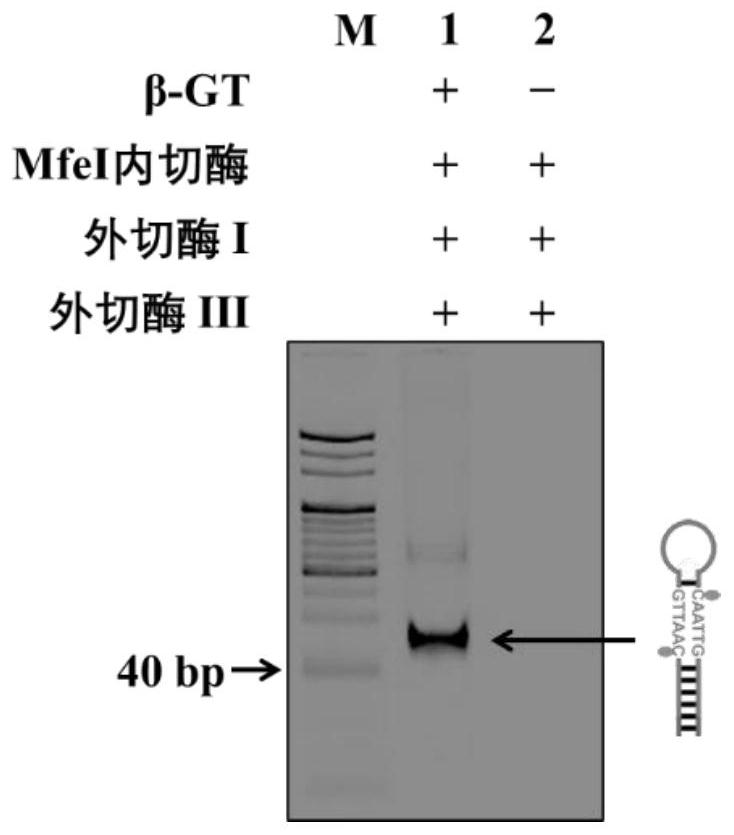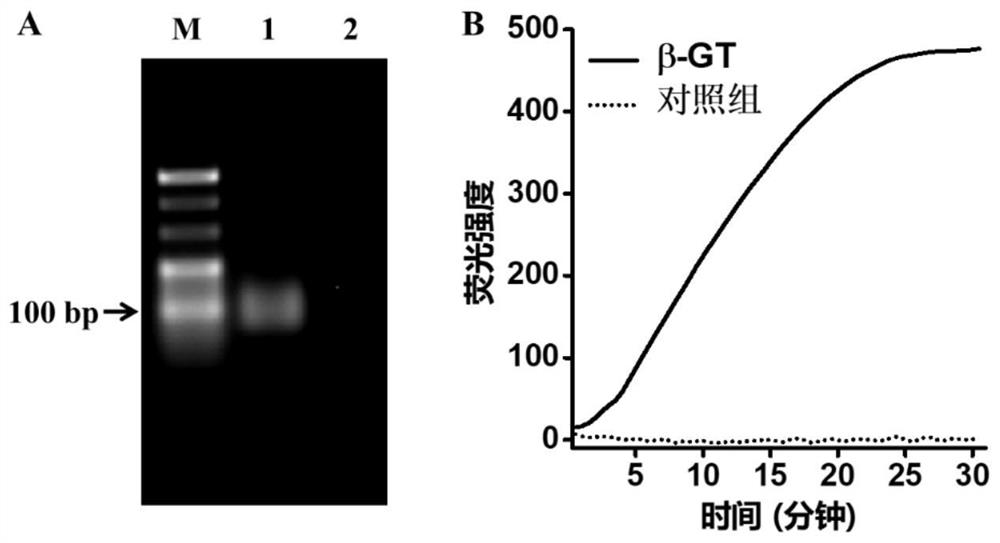Fluorescent biosensor of beta-glucosyltransferase, detection method and application
A technology of glucotransferase and biosensor, which is applied in the field of bioanalysis, can solve the problems of lack of signal amplification strategy, complicated procedures, and risk of substrate radioactivity, and avoid material preparation and functionalization process, and the reaction conditions are constant temperature and homogeneous, good The effect of the signal amplification effect
- Summary
- Abstract
- Description
- Claims
- Application Information
AI Technical Summary
Problems solved by technology
Method used
Image
Examples
Embodiment approach
[0034] A typical embodiment of the present invention provides a fluorescent biosensor for β-glucose transferase, including a detection probe, an endonuclease, an exonuclease, a helicase, a polymerase, a primer DNA, and a SYBR dye;
[0035] The detection probe is a hairpin structure formed by single-stranded DNA, and the detection probe has a recognition site that can be recognized and cut by an endonuclease, and the recognition site contains 5-hydroxymethylcytosine, and the single-stranded Both ends of the DNA are modified with phosphorothioate;
[0036] After the detection probe is recognized and cleaved by an endonuclease, it can be further cleaved by an exonuclease;
[0037] said helicase is capable of unwinding the stem of a hairpin structure;
[0038] After the primer DNA is complementary to the single-stranded DNA, a double-stranded DNA is formed under the action of a polymerase;
[0039] The SYBR dye can specifically bind to the double-stranded DNA.
[0040] The fluo...
Embodiment
[0059] β-GT activity detection: In order to detect the glycosylation reaction of 5-hmC in the detection probe, 1 microliter of different concentrations of β-GT was mixed with 80 micromole per liter of uridine diphosphate glucose (UDP-glucose) , 50 mmol per liter of potassium acetate, 20 mmol per liter of tris-acetic acid, 10 mmol per liter of magnesium acetate and 100 microgram per milliliter of BSA in the reaction buffer with 200 nanomol per liter The detection probes of the hairpin structure were mixed and incubated at 37°C for 1 hour. Subsequently, 60 units of MfeI endonuclease were added, and the reaction system was adjusted to 15 microliters, and incubated at a constant temperature of 37° C. for 4 hours. Unglycosylated probes were then digested completely with 10 units of exonuclease I and 10 units of exonuclease III for 30 minutes at 37°C. After heating at 80°C for 20 minutes to terminate the exonuclease activity, according to the instructions provided by the manufactur...
PUM
 Login to View More
Login to View More Abstract
Description
Claims
Application Information
 Login to View More
Login to View More - R&D
- Intellectual Property
- Life Sciences
- Materials
- Tech Scout
- Unparalleled Data Quality
- Higher Quality Content
- 60% Fewer Hallucinations
Browse by: Latest US Patents, China's latest patents, Technical Efficacy Thesaurus, Application Domain, Technology Topic, Popular Technical Reports.
© 2025 PatSnap. All rights reserved.Legal|Privacy policy|Modern Slavery Act Transparency Statement|Sitemap|About US| Contact US: help@patsnap.com



